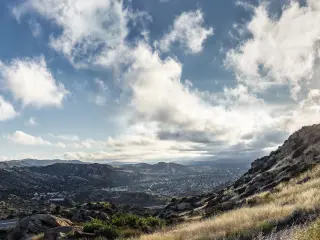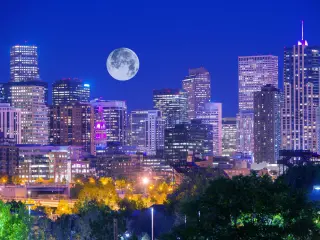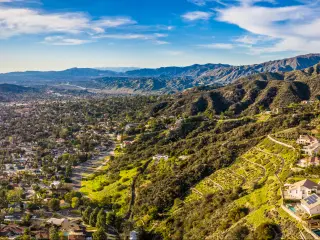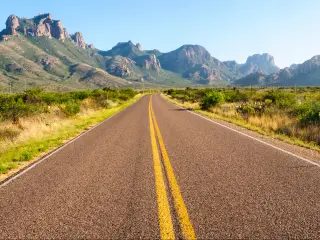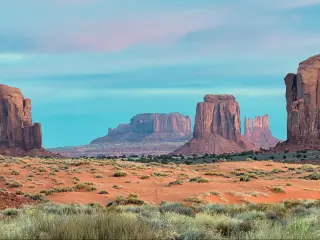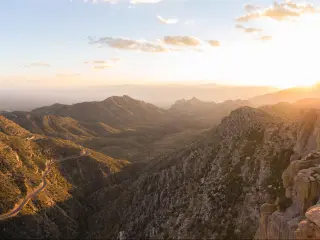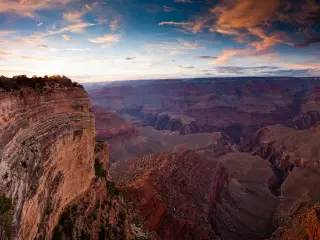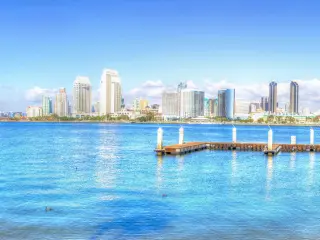25 Best National Parks Near Phoenix
Among the many things that Phoenix has in its favor is close proximity to of some of the country's top national parks. The the capital city of Arizona is perfectly placed as a fantastic gateway to nature, with so many stunning parks only a short drive away.
Whether you're a history buff - or an adrenaline junkie in search of the most extreme hikes and panoramic views - there's a national park for you within striking distance of Phoenix.
As you scroll through this article, you'll find a detailed rundown of the top 25 national parks near Phoenix, Arizona. And as a helpful shortcut, we've listed a few of the most popular national parks directly below, in case you'd like to jump straight to one in particular.
Alternatively, if you would like to take a longer break and venture out further, check out our suggestions for the 20 best road trips from Phoenix.
National Parks near Phoenix
- Saguaro National Park, Arizona
- Joshua Tree National Park, California
- Grand Canyon National Park, Arizona
- Zion National Park, Utah
- Death Valley National Park, California
- Arches National Park, Utah
- Yosemite National Park, California
There's something for everyone on this list of the 25 best national parks near Phoenix, so read on below for the things to explore and learn, the fastest way to get there, and more!
We have also made a list of the best National Monuments, State Parks, National Conservation Areas and Preserves near Phoenix for you to explore to make the best of your time out of the city.
1. Saguaro National Park, Arizona
1 hour 30 minutes from Phoenix (105 miles)
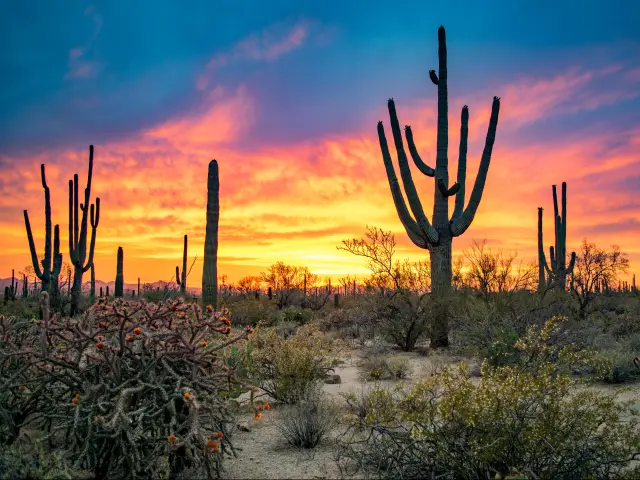
Located just over a hundred miles from Phoenix is the Saguaro National Park, home to the iconic Saguaro Cactus that the park is named after. This is the nearest national park to Phoenix, located just a short one-and-a-half drive away.
If you're looking to spend some time in vast Southern landscapes, visiting Saguaro National Park is definitely a great way to explore the sprawling valleys and their unique flora that has come to become a symbol for the state of Arizona.
It is situated on the outskirts of Tuscon, a metropolitan city of Arizona, and the easiest way to get there is to get on Interstate 10 (I-10) East and follow it for nearly your entire journey until you get to Exit 246 towards Cortaro road, that'll lead you to the entrance to the park.
The park itself is divided into two segments, each located on opposite ends of the city of Tuscon. The western section, also known as the Tuscon Mountain District, houses a denser population of the namesake cacti, lower elevation trails, and old signage of past residents.
The eastern section, or the Rincon Mountain District, is known for having more hikes, a scenic road called Cactus Forest Drive, and campgrounds if you want to stay overnight.
A unique topographical landscape, at Saguaro National Park, you'll find plants and animals that you've likely never come across, like, of course, the massive tree-like Saguaro Cacti, which in the summertime have pristine white flowers blooming on them.
Best time to visit Saguaro National Park is winter, because the weather is especially mild during this time of the year with temperatures that average 65 degrees Fahrenheit, which will make outdoor activities much more pleasurable.
Bonus: You can spot Whiskered Screech Owls, Vermillion Flycatchers, Gray Fox, and more here. Since it's an arid region, you'll also find reptiles like the Diamond-backed rattlesnake, Western banded gecko, Madrean alligator lizard, Desert tortoises, and more.
2. Petrified Forest National Park, Arizona
3 hours 45 minutes from Phoenix (210 miles)

A park whose history dates back to over a million years, the Petrified Forest National Park is located in the Apache and Navajo Arizona districts and is just over 200 miles from Phoenix, less than 4 hours' drive from the city.
The park has two entrances, and there are two routes you can follow to get to your destination. The best route to follow is via AZ-87 North and AZ-260 East, which you can get on right outside of the city of Mesa.
Though the park's natural landscape has existed for centuries, it is believed that it was populated by humans, called the Puebloan people, for the first time just over 13,000 years ago.
Throughout the park, you'll find several artifacts and petroglyphs from which you'll learn more about their lives, work, and contribution to keeping the landscape alive and diverse.
Home to one of the world's largest concentrations of petrified wood, you'll find different natural features like ancient village ruins, the Rainbow Forest, the Painted Desert, and other beautiful and historically significant monuments.
To feed the historian in you, you can also look at exploring the Painted Desert Inn, which houses a museum full of Hopi exhibits, and learn more about the plant and animal fossils found in the area.
Said to be an ideal park to visit for a weekend getaway; you can explore the sights of the region through some of the many hikes in the park, go backpacking, stay the night in the park's campgrounds, try horseback riding, and many other activities.
If you are not pressed for time and are looking to make a longer journey, you can also add the Grand Canyon National Park to your route and make a circular trip before returning to Phoenix.
The fall is a great time to visit the Petrified Forest National Park, as it is not as crowded and boasts milder temperatures at 70 degrees Fahrenheit.
3. Joshua Tree National Park, California
3 hours 25 minutes from Phoenix (225 miles)

One of the most straightforward routes from Phoenix leads to the iconic Joshua Tree National Park, situated adjacent to the well-known Coachella Valley (where the Coachella music festival is held annually).
A three-and-a-half-hour drive from the city, the best way to get there is via I-10 West, that'll take you straight from Arizona to California and lead you right to the entrance of this expansive protected area.
This Southern California National Park is named after the unusual, twisted Joshua trees that are in abundance in the area and consists of two different deserts - the Mojave Desert and the Colorado Desert.
You can also tour through the Joshua Tree Forest, Cholla Cactus Garden (where you'll spot unique cacti in their natural habitat), Black Rock Canyon, and Keys View (the highest point in the park), which offers a breathtaking view of the whole park, especially at sunset.
The park also has several trails, including the scenic Arch Rock Trail, which are great for experienced rock-climbers and adventure excursionists.
The region's history is also fascinating as it is believed that the first human settlers arrived in the area five thousand years ago, and then in the late 19th century, the park attracted miners and farmers who later abandoned the region, leaving the park to the touristic visitors.
That being said, if you visit at the correct time and get lucky, you'll probably be able to spot kangaroo rats, coyotes, rattlesnakes (be sure not to get too close), bobcats, and other fascinating species.
For a bigger adventure, you can pair this trip with a visit to Los Angeles and enjoy one of the most vibrant cities on the West Coast and its myriad of exciting attractions during your getaway.
Winter is a good time to do this as both the park and the city won't be as crowded and the temperature averages will be around 60 degrees Fahrenheit. This is also an amazing time to enjoy the dark skies in the park and stargaze.
Bonus: If you're traveling with kids or are an avid explorer yourself, you can also take some time to visit the abandoned gold mines nearby!
READ MORE - Road Trip From Phoenix To Joshua Tree National
4. Grand Canyon National Park, Arizona
3 hours 45 minutes from Phoenix (230 miles)
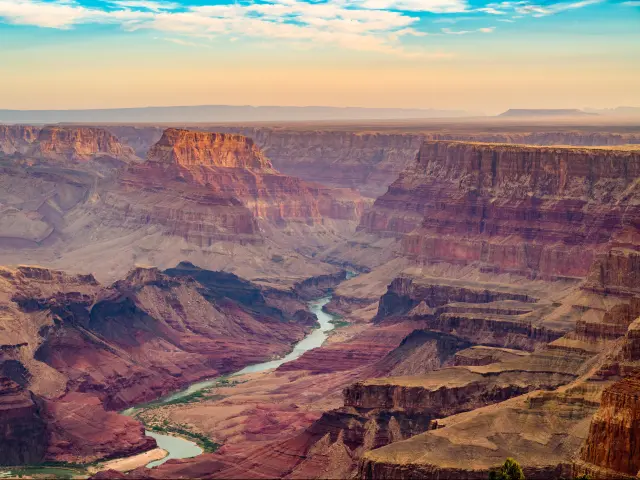
Almost a 4 hour drive away from Phoenix is one of the first national parks in the country, famously also one of the seven wonders of the natural world. The Grand Canyon National Park sits at the border of Utah and Arizona and is an amalgamation of wonders you can't miss.
If you haven't visited the Grand Canyon yet, you might as well stop reading this list, pack your bags and get on the road because this is an absolute must-see national park, located only a few hours' drive from Phoenix.
With a vibrant past, red rocks for days, and some of the best adventure excursions of the entire National Park System, the park is a bucket-list place for most people.
The park is separated into the North Rim and South Rim, each segment offering different experiences. The fastest way to get to the South Rim from Phoenix is via Interstate 17 (I-17) North heading towards Los Angeles, and you'll exit onto Interstate 40 (I-40) West before Flagstaff.
The drive to the North Rim will add up to two hours to your entire journey, but if exploring that region interests you more, you can get there by exiting onto I-40 East, before Flagstaff, heading towards Albuquerque, and following US Route 89 North will lead you to the park entrance.
Spread over a million acres, the park is known for its river streams, distinctive topography and weather, rugged canyons, stellar views of the canyons and the region beyond, and so much more.
It is also inhabited by species like Elk, Mule Deer, Mountain Lions, and Bighorn Sheep and was declared to be a Globally Important Bird Area in 2014 as it is the home of up to 450 different bird species, including the very rare California Condor.
You'll be able to explore the sights of the area in several unique ways; rafting or paddleboarding on the Colorado River, through one of its many hikes (each varying significantly in difficulty and elevation), biking, etc.
The red-rocked region, which was declared to be beautiful but valueless back in the 1800s, has since 1903 become one of the most loved national parks in the country and world!
You can also extend your trip by visiting Flagstaff and the spectacular Meteor Crater, formed 50,000 years ago when a meteorite crashed into the Earth.
The North Rim closes in winter, so best time to visit is late spring-early summer if you wish to visit all of the iconic sights of the Grand Canyon. The temperatures do get above 80 degrees Fahrenheit in the South Rim during summer, so make sure to pack lots of water.
READ MORE - Road Trip From Phoenix To The Grand Canyon
5. Zion National Park, Utah
6 hours 10 minutes from Phoenix (380 miles)
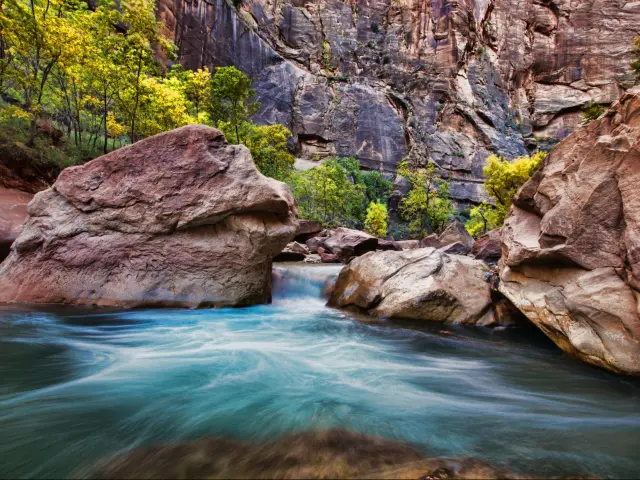
Located near the border of Utah and Arizona is one of the most visited national parks in the country; Zion National Park. A 6-hour drive from Phoenix, it is one of the most stunning national parks you can't miss out on.
The best way to get there is via I-17 North until exiting onto I-40 East towards Albuquerque and following US Route 89 North to get to Utah. Then, you'll follow along local roads to reach the East Entrance to the park.
Known for its awe-inspiring red canyons covered in lush forestlands, Zion National Park has such a diverse group of landscapes to see and immerse yourself in. This park is home to some of the most beautiful hikes in the entire country.
You will be amazed by the natural beauty of Emerald Pools, which are naturally occurring pools with majestic waterfalls and even a hanging garden that looks unreal, and the Narrows, which are the crown jewel of the park.
At the park, you can also go swim or kayak in the Virgin River, for which a permit is needed and can be obtained at any of the park's visitor centers.
Though the park is by no means the largest in the country, it welcomes many tourists year-round because of how different each part of the park is and the variety of activities you can engage in.
Though your experience is bound to be excellent no matter when you visit, a trip through the park in the fall months, with the foliage, rocking sunsets, and perfect hiking weather, is sure to be one for the books, especially for the adventurer in you.
You can add Las Vegas and Death Valley National Park to your route for a longer trip filled with some of the most iconic sights and exciting neon-lit attractions.
If you'd like to hike up to Angels Landing, you will need a permit and will need to make a reservation. Check the Zion National Park's website for more details.
READ MORE - Road Trip From Phoenix To Zion National Park
6. Death Valley National Park, California
6 hours 45 minutes from Phoenix (390 miles)
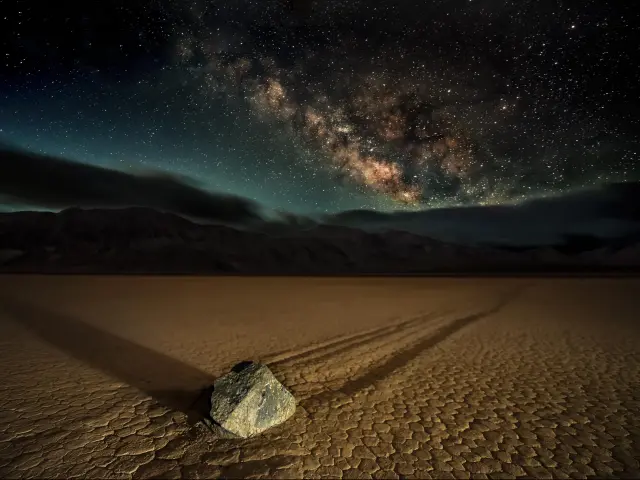
A holder of many records, the Death Valley National Park is located near the eastern border of Nevada and California, and as the home to North America's lowest point amongst many other things, it is a must-visit national park.
To get to Death Valley National Park, you'll get on US Route 60 West and US Route 93 North which will eventually lead you to I-40 West. After taking the exit towards Las Vegas. NV-160 West will then take you out of the state and CA-190 West will lead you to the park's entrance.
Death Valley National Park is famously known as the land of extremes; as the lowest point of North America, Badwater Basin, situated at 282 feet below sea level, is juxtaposed by Telescope Peak, a mountain in the region that is 11,048 feet tall.
In the park, you can explore the various geological features through iconic hikes and trails and spend time on the Devil's Golf Course, a spooky-looking course created atop the salt flats that the park houses.
Be sure to take time out for a scenic drive along Artist's Drive, a 9-mile road that'll take you around the Black Mountains.
With the park being the land of extremes, its weather is no exception, so if you're visiting in the summertime, keep applying sunscreen and hydrating regularly as the temperatures often exceed 120 degrees Fahrenheit.
The winter months are thought to be the best time to visit, devoid of the heat, to go on trail excursions and immerse yourself in the beauty of the park.
Bonus: One of the best International Dark Sky Parks, if you choose to camp here during your getaway, you'll get an opportunity to stargaze like no other!
7. Mesa Verde National Park, Colorado
6 hours 55 minutes from Phoenix (425 miles)

Known for preserving the history of the dwelling of the Puebloan people and their contribution to the natural preservation of the region, Mesa Verde National Park is located a bit over 7 hours from Phoenix. This is the park to visit if you're interested in historically rich places.
There are several ways to reach Mesa Verde from Phoenix. Following I-17 North towards Flagstaff will give you the option to add the Grand Canyon to your route. US Route 89 North and US Route 160 East will then take you to your destination.
If you follow AZ-87 out of the city and AZ-277 towards the north, you will have the opportunity to visit Sitgreaves National Forest and Petrified Forest National Park on the way. I-40 and US Route 491 will ultimately take you to Mesa Verde National Park.
At the national park, you'll find the Chapin Mesa Archeological Museum, which has several exhibits on the lives of the past inhabitants and is a great place to learn about the history of the nature of the region.
The park is famous for the Cliff Palace (a colossal structure believed to be the biggest cliff dwelling in North America) and ancient dwellings of nearly 26 tribes of Puebloan people that have been preserved for visitors to learn about and honor their contributions.
The park was declared a World Heritage Site in September 1978 and has attracted visitors ever since. You'll enjoy stunning views of the region while on the Mesa Top Loop Road, observe the fascinating dwellings from Sun Point Overlook, and discover petroglyphs across several trails.
Though open year-round, the area may witness some snowstorms in the winter, so it's recommended to visit in the summer or the first half of fall for good weather and stunning sunsets!
8. Channel Islands National Park, California
7 hours 15 minutes from Phoenix (445 miles)
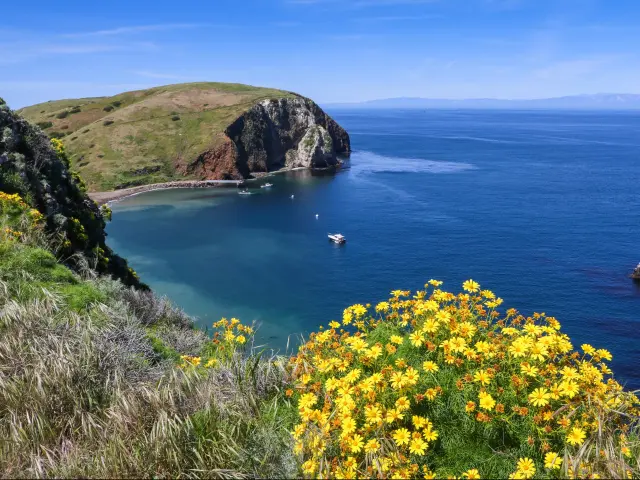
If you're searching for a one-of-a-kind national park, the Channel Islands National Park, situated off the California coast, is the one to visit. With five different islands, each majestic in their own right, a 7-hour drive from Phoenix to this unique national park is bound to be worth it.
To get there, you'll get on I-10 West, the road you follow for most of your journey. After entering the golden state of California, you'll ultimately get on California Route 210 West and then US Route 101 North, leading you to Ventura.
Since the park is surrounded by water, you'll take a ferry from Ventura Harbour to the islands, which is a beautiful adventure.
Each of the islands has different flora and fauna - Santa Cruz Island is home to sea caves that are caves adorned with painted murals that you can kayak through; Santa Barbara Island is the smallest of them all and is known for its rich history and different species of seals.
The Anacapa Island boasts iconic views of the sea and the islands, while Santa Rose Island is perfect for foraging through the thick island groves as it is full of Torrey pines, and the San Miguel Island is spread across 9,500 acres and is inhabited by fascinating wildlife.
You will find the opportunity to enjoy overnight stays on each of these islands as they all have campgrounds, with the biggest one on Santa Cruz Island.
If that doesn't sound thrilling enough, many tour companies offer longer, full expeditions where you can stay on a boat for several days and soak in all that the Channel Islands have to offer.
You can visit Los Angeles or even San Diego for an extra day or two by the ocean before making your way back to Phoenix if you aren't pressed for time.
Bonus: If possible, try and plan your trip between December and April as that's the time of year Gray Whales migrate, or the peak of summertime when you might spot humpbacks or, if you get fortunate, even a blue whale!
9. White Sands National Park, New Mexico
6 hours 25 minutes from Phoenix (445 miles)
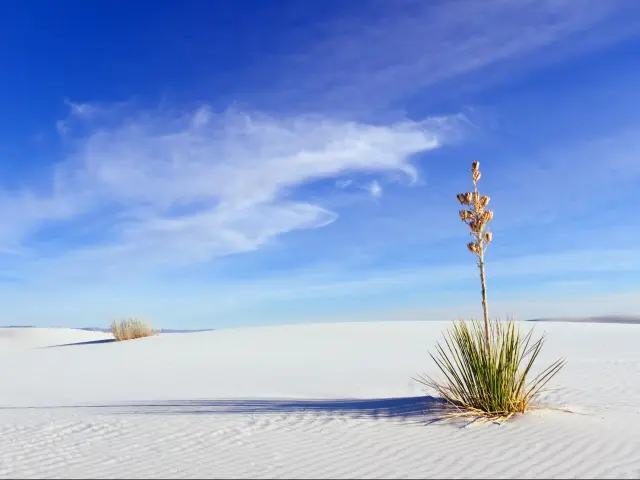
Located in New Mexico about 6 hours and 25 minutes away from Phoenix is one of the newest and most distinctive national parks in the country, the White Sands National Park. Established in December 2019, this national park welcomes an average of 600 thousand visitors yearly.
A park perfect for a day trip or a pit stop while you're on a more extended getaway, the most straightforward route to follow to get there from Phoenix is via I-10 East which will take you through Tuscon into New Mexico.
You'll then merge with Interstate 25 (I-25) North and then US Route 70 East, which will lead you to the entrance of this pristine white park.
Sandwiched between the San Andreas Mountains and the Sacramento Mountains is the Tularosa Basin, on which the White Sand National Park rests. Covered in Gypsum, this park is truly a sight to see, especially since it is rare for Gypsum to occur in the form of dust.
Though the Gypsum particles are transparent, so many granules are constantly rubbing against each other under the slight, the friction and scratches make it appear as white as snow.
The dunes in the park range from 10 feet to 60 feet tall, each promising stunning views of the park from its summit. You'll also find Lake Lucero at the park, which has a formation of selenite crystals at its bed and a hiking loop that you must explore.
An ode to the unique geological features of the area, several plants and animals have adapted and evolved over decades to survive in the park's specific topographical and climate conditions (since Gypsum doesn't retain heat, even on the hottest days, the sand remains cool).
The best time to visit this national park is fall to see its unique flora of Cottonwoods change color. The temperatures are also mild around 70 degrees Fahrenheit during these months and the Milky Way has the best visibility.
If you're staying overnight in the park, you might spot the African Oryx, Bleached Earless Lizard, Apache Pocket Mouse, or other nocturnal animals.
10. Bryce Canyon National Park, Utah
6 hours 55 minutes from Phoenix (430 miles)

Located in Southern Utah, spread across 35,835 acres, is the largest concentration of red-colored hoodoos (natural columns of rock formations) in the region established as the Bryce Canyon National Park, located a bit less than 7 hours from Phoenix.
Following I-17 out of the city will take you on US Route 89 past Flagstaff. Following this highway will take you into Utah and directly into your destination in the Bryce Canyon National Park.
Made of limestone, magnesium, iron, sandstone, and other elements, the hoodoos are one-of-a-kind natural rock formations that will leave you awestruck.
The best way to explore and observe the massive natural amphitheater that is the center point of the park is through the park's trail paths and overlooking points like Bryce Point and Sunset Point.
The park, set at a high altitude, is one of the best International Dark Sky parks, so if you choose to hike the area at night (which is not highly recommended for beginner hikers), you'll have a stargazing experience that you're sure to remember.
With the high altitude, the weather fluctuates more and can get cold with temperatures often falling below 20 degrees Fahrenheit in winter. If you're brave enough to weather the cold, the snowfall over the beautiful rock structures and cross-country skiing will make it all worth it!
Not only is the park's beauty worth the distance, but you can club most of the national parks in this part of Utah into one mega Utah road trip to visit Glen Canyon Recreational Area and Capitol Reef National Park as well as the Grand Canyon on your way back.
READ MORE - Road Trip From Phoenix To Bryce Canyon
11. Canyonlands National Park, Utah
7 hours 30 minutes from Phoenix (460 miles)
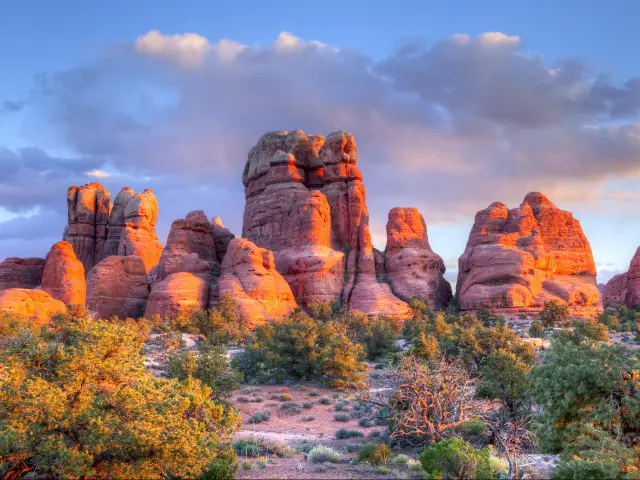
If you're searching for your next adrenaline-pumping adventure, a trip to the iconic Canyonlands National Park in Utah, located a 7-and-a-half-hour drive from the city of Phoenix, is sure to be exactly that.
The best way to reach the park is by getting on I-17 North towards Flagstaff. Following US Route 89 North will lead you to US Route 160 East. Finally, you'll get on US Route 191 North to enter Utah and make your way to the park's entrance.
The park is divided into four districts by the rivers: Island in the Sky, The Maze, The Rivers, and The Needles, each segment offering a different and exciting adventure.
You'll get a chance to tour the famous Mesa Arch, which is a pothole arch, in the Island in the Sky, the Green River Overlook, and Grand View Point, each of which boasts stunning vistas of the region (especially at sunset).
The famous Newspaper Rock is located just outside the entrance to the Needles District of the park and houses possibly the most extensive petroglyph collection in the country.
You can go hiking on the park's trails (the trail to get to Horseshoe Canyon is the most well-known, and though it is rather challenging, the views are phenomenal), boating or kayaking along the Colorado River, or camp overnight in the park's camping grounds.
To add more excitement to your adventure, you will have the option to add the stunning Grand Canyon to your trip as this national park will only be a short detour away.
The best time to visit, especially for hikers, is in the fall or spring as the dry daytime temperatures fluctuate between the mild 60 and 80 degrees Fahrenheit, which will allow you to move around without getting stuffy or wet.
Bonus: An International Dark Sky Park, at Canyonlands National Park, with fair proximity to the lights of the nearby cities, the starry nights under which you camp in the barren land and play some UNO are bound to be enjoyable!
12. Arches National Park, Utah
7 hours 30 minutes from Phoenix (475 miles)
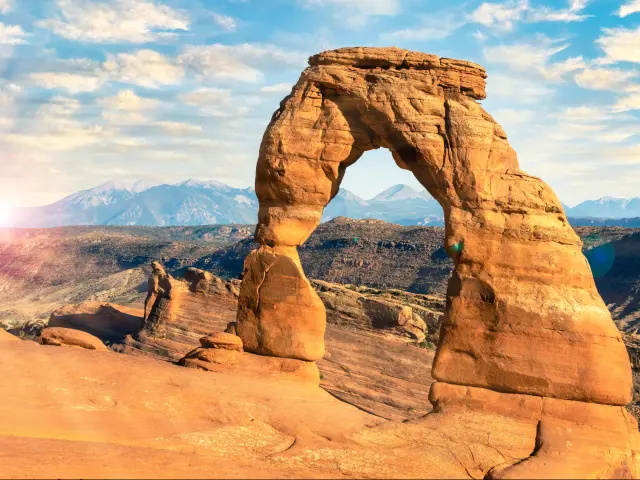
Another top national park in Utah, Arches National Park, is known for its picturesque sandstone arches and trails, making it an excellent place for a day trip while visiting nearby areas.
It's over a seven-and-a-half-hour drive from Phoenix, but when the sun begins to set in the background of nearly 2,000 naturally occurring red and orange-hued sandstone arches, that stunning scenery will genuinely be worth the long drive.
The best route to follow begins with I-17 North headings towards Flagstaff. You'll then exit onto US Route 89 North, which will lead you to US Route 160 East for over a hundred miles. Turning onto US Route 191 North will lead you to Arches National Park Road.
Spread across a relatively small area of 76,679 acres, the park is densely populated by these picturesque arches, which came about due to sand erosions that occurred centuries ago.
As an arid, desert-like region, the park is home to several nocturnal animals like bobcats, mountain lions, foxes and desert rodents, which makes it a wildlife watcher's paradise.
It is known for its ranger-led tours, particularly those that lead you through the Fiery Furnace, Private Petroglyph Tour and the iconic Arches 4x4 adventure for adrenaline seekers. Several hikes will challenge your endurance, but the views compensate for all the exhaustion.
The peak season of Arches National Park is in July and August, meaning that the hotel prices in the area will be at their highest and the famous trails, such as the famous Devil's Garden Trail will have longer queues.
Close to other national parks in the state, you can combine them into one mega adventure-filled exploration trip by planning your visit to pass through the Canyonlands National Park.
Moab is a fantastic place to base yourself in while exploring Arches and Canyonlands National Parks. Here is our detailed guide on the road trip from Phoenix to Moab.
You might need to make a reservation for a timed-entry permit while visiting Arches National Park. Please check the national park's website for up-to-date information.
READ MORE - Road Trip From Phoenix To Moab
13. Capitol Reef National Park, Utah
8 hours 50 minutes from Phoenix (515 miles)
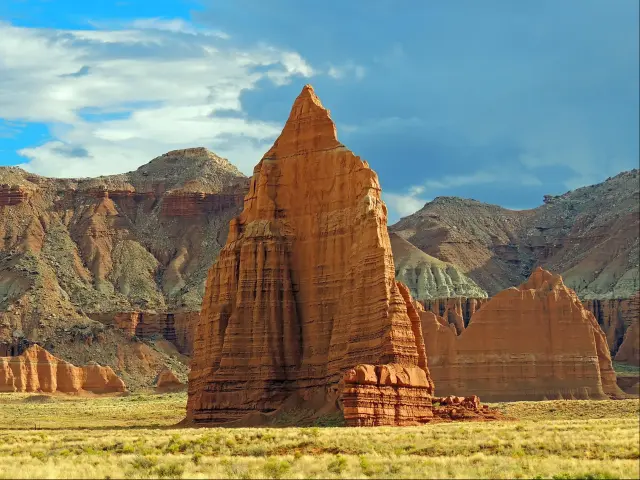
Located around a geological wrinkle on the earth's surface famously known as the Waterpocket Fold is the Capitol Reef National Park, which is about 9 hours away from the city.
The best route to get to Capitol Reef National Park begins on I-17 North heading towards the town of Flagstaff. You'll proceed to exit onto US Route 89 North and onto US Route 160 East. You'll then turn onto US Route 163 North and follow the signs for Capitol Reef National Park.
The park gets its first name, "capitol," from the iconic sandstone peaks surrounding the region, and its second name, "reef," refers to the similarity in the jagged rock formations that naturally occur in the area with coral reefs found in the ocean.
With an extensive history and exhaustive list of inhabitants that have each in their own ways, contributed to the beauty of the park, from Mormon Settlers to European Tourists and Paleo Indians, the different natural features are a treat to explore.
To discover the attractions and indulge yourself in the park, you can go hiking, horseback riding and canyoneering up the park's rugged rock formations.
If you're looking for something more laid back, the park offers numerous orchard tours (pear, apple, mulberry, and more) that are another great way to interact with the environment. You also can visit Gifford House Store and Museum to get a glimpse of homestead life.
While the varying seasons provide opportunities to marvel at different scenery, the best time to visit is April or September, when the mild temperatures fluctuate around 60 degrees Fahrenheit. It does get chilly at night with a low of 35 degrees, so pack warm.
14. Guadalupe Mountains National Park, Texas
7 hours 50 minutes from Phoenix (540 miles)

Referred to by many as "America's best-kept secret," the Guadalupe Mountains National Park, located in the Guadalupe Mountains, east of El Paso, in the state of Texas, is a dream for any hiker or adventure seeker.
Roughly under an eight-hour drive from Phoenix, this is one road trip where the distance is bound to be worth it because the park's picturesque landscapes and diverse natural beauty will leave you in awe.
You'll begin by getting on I-17 South and then merging with I-10 East which is the road to stay on for most of the drive. You'll then exit onto state routes and then finally get onto US Route 180 East, which will take you to the park's entrance.
The park is surrounded by canyons and mountains, juxtaposed by valleys and deserts, and is home to some of the most unique flora and fauna in the state.
It is also known for having the world's most extensive conservation of Permian fossil reefs and the region with the top tallest mountains in Texas.
You'll find a part of the Chihuahuan Desert with salt flats and dunes in the western part of the park, canyon interiors and bubbling streams in another section, and highly elevated thick alpine forests with Arizona Pine, Rocky Mountain Douglas Fir, and other trees.
With a charged history of years of environmental degradation, its past damage makes the region all the more interesting to explore and appreciate all that it offers.
Across the park, you'll spot animals like Mule Deer, Coyotes, Bobcats, American Black Bear, and birds like Grosbeak, Golden Eagle, and Great Horned Owl.
Guadalupe Mountains National Park can be visited all year round but expect big crowds on the trails during the spring and fall and especially during the Spring Break when the weather is ideal at 65 degrees Fahrenheit. The hotel prices will also be at their peak during these seasons.
15. Black Canyon of the Gunnison National Park, Colorado
9 hours 15 minutes from Phoenix (560 miles)
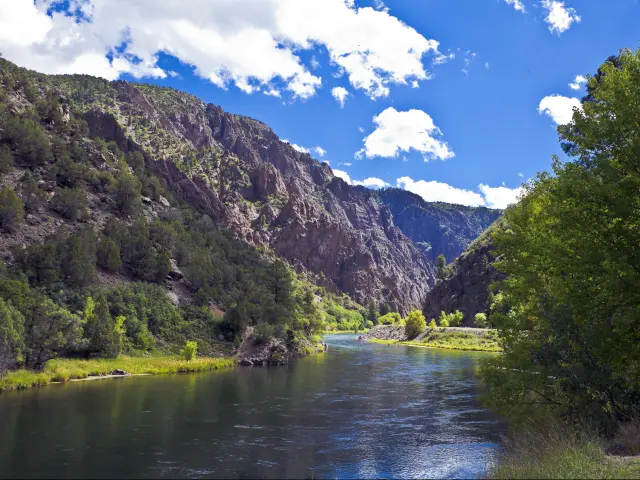
Located in Western Colorado, right by the Gunnison River, is the Black Canyon of the Gunnison National Park, nicknamed Colorado's version of the Grand Canyon and is located about 9 hours and 15 minutes from Phoenix.
To get to this significantly smaller park than the others on the list, you'll begin your trip on I-17 North towards Flagstaff for over a hundred miles and exit onto US Route 89, which will lead you to US Route 160 East, taking you through state and local roads to reach the park.
Two million years of ecological change, weathering, and atmosphere evolution led to the steep, rugged canyons carved by the mighty Gunnison River, hence the park's name.
The park is open year-round, though much like a lot of the Colorado National Parks, visiting during the fall months is considered to be favored by most people with their mild temperatures that rarely fall below 46 degrees Fahrenheit.
You can go on a drive on the park's famous roads - the South Rim Road Drive and the North Rim Road Drive, explore the hidden corners of the canyons while hiking on some of the park's most recommended trails and soak in the beauty of the landscape without heavy crowds.
A perfect park for a weekend getaway since it is conveniently sized for a shorter exploration, you can choose to combine your visit here with some of the other Colorado national parks or the city of Denver for an iconic Colorado road trip.
16. Carlsbad Caverns National Park, New Mexico
8 hours 30 minutes from Phoenix (570 miles)
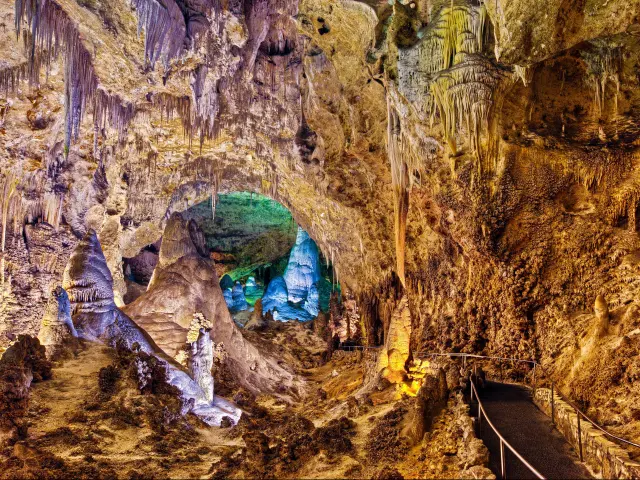
Situated in Southern New Mexico and well-known for its extensive caves, jagged canyons, and peculiar topography, the majestic Carlsbad Caverns National Park is definitely a park you cannot skip out on.
Located an 8-and-a-half-hour drive from Phoenix, you'll begin your trip by getting on I-10 East. Though through this route, you'll pass through New Mexico, enter Texas, and then re-enter New Mexico. You'll then get onto US Route 180 East, which will take you to your destination.
Known for the Carlsbad Cavern, which gives its name to the park, a 4,000 feet long limestone chamber, the exploration and learning opportunities at this park are endless. Other attractions you can tour are the Billy the Kid Museum and the Three Rivers Petroglyph Site.
The scenic park has over a hundred other caves, each formed due to the reaction of limestone interacting with sulphuric acid, creating these naturally occurring formations.
Perfect for visiting with people interested in unique geology or even kids, you can go hiking around the region, tour the caves (cave excursions require advance bookings), or even indulge in one of the many exciting ranger programs hosted by the NPS.
The best times to visit Carlsbad Caverns National Park for these warm-weather activities are from late May to early July when the temperature is around 80-85 degrees Fahrenheit.
17. Sequoia National Park, California
9 hours 45 minutes from Phoenix (580 miles)
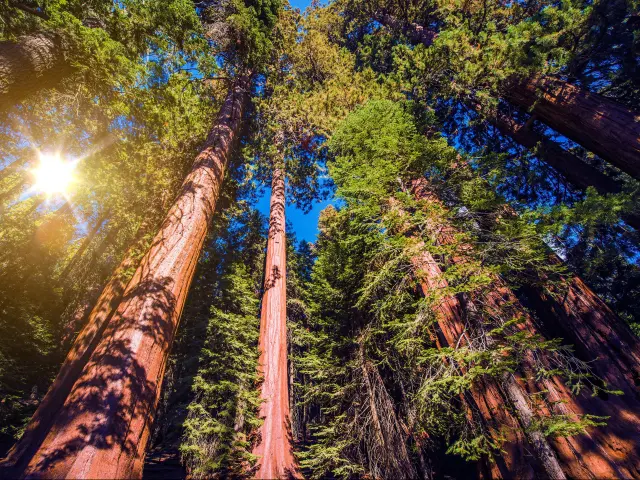
Known for its enormous Sequoia trees, nestled in the Sierra Nevada Mountains in Southern California, is the Sequoia National Park. Located just shy of a ten-hour drive from Phoenix, the peace and serenity of the dense forests is sure to be worth the distance from the city.
Better yet, you can pick out all the national parks you'd want to tour in the Southern California region and make it a California National Park adventure!
You'll begin by getting on I-10 West which you'll follow for over half your trip. Shortly after entering California, you'll take an exit onto California Route 210 West and then Interstate 210 (I-210) West.
You'll proceed to exit onto Interstate 5 (I-5) North heading towards Sacramento, and then follow state routes to ultimately cross Three Rivers (the closest town to the park) and arrive at the entrance.
Besides the towering Sequoia trees that give the park its name, you'll discover bubbling river streams, fantastic caves, scenic overlooks like the Moro Rock, and many other impressive landmarks in the park.
The park is also home to the General Sherman Tree, the bulkiest tree in the world, which is up to 270 feet tall and weighs nearly four and a half million pounds, making it an attraction that you can't miss out on.
Be sure to also traverse through the Tunnel Log, a Sequoia that had fallen and subsequently converted into a tunnel.
Whether you like brisk walks and tranquility or fast-paced hikes that challenge your physical fitness and agility, Sequoia National Park has all you can ask for. For the best experience, visit June through August, when the temperatures are stable at around 85 degrees Fahrenheit.
18. Great Basin National Park, Nevada
9 hours 25 minutes from Phoenix (605 miles)

The Great Basin National Park is located in White Pine County, Nevada, near the Utah border. Home to the South Sanke Mountains and the Great Basin Desert, it has a vibrant ecological history and geography that is bound to be exciting to explore.
You'll begin your 9-plus hour road trip by getting on I-10 West before exiting onto US Route 60, which will merge onto US Route 93 North. This highway will take you through the iconic city of Las Vegas as you enter Nevada and near the park.
Finally, you'll exit onto US Route 50 East, which will lead you to NV-488 West which is the entrance to the park.
The park is known for being home to the second tallest peak in the state, Wheeler Peak (13,056 feet tall), the eerie Lehman Caves that are worth the walk through, and the majestic Stella Lake.
A land of diverse landforms, there's so much you can do, such as take a self-guided tour on the Mountain View Nature Trail or soak in the beautiful sunset while on a drive on Wheeler Peak Scenic Drive.
If you would like to be more involved with the scientific activities on offer, you can participate in an astronomy program led by a park ranger or delve deeper into history by exploring the fascinating rock murals in the Pictograph Cave.
Summer is the busiest time in the park, when you can expect queues on popular hikes and trails. If you can alternatively visit in early fall to admire the yellow and gold colors of the aspen trees as the crowds thin and the temperature is a comfortable 70 degrees Fahrenheit.
Bonus: Believed to have one of the most beautiful stargazing experiences, camping a night in the park is the ideal activity if you're looking for a nature reset and some peace from an otherwise hectic life.
19. Kings Canyon National Park, California
10 hours 15 minutes from Phoenix (615 miles)

Nestled among the southern Sierra Nevada Mountains in California is the massive 461,901-acre national park called Kings Canyon National Park, which is located over 600 miles from Phoenix.
To get to Kings Canyon, you'll begin your road trip via I-10 West which will take you straight to California. You'll proceed to get on CA-210 West and promptly merge with I-210 West.
You'll then exit onto I-5 North heading towards Sacramento, and then follow state routes to ultimately cross Pinehurst (a small town near the park) and arrive at the entrance.
A relatively lesser-known and visited park compared to others in the area, it is home to exciting attractions like the Monarch Lakes, the John Muir Wilderness as well as several scenic overlooks.
To explore the natural beauty, you can choose from the several hikes that the NPS offers in the park, some easy and others more challenging, go fishing in the bubbling rivers, horseback riding, camping in the expansive campgrounds surrounded by the tall trees,
If you visit during winter, you can even indulge in winter sports like sledding or snowboarding. Keep in mind that the temperatures drop downwards to 35 degrees Fahrenheit at night, so make sure to pack warm.
At the park, you'll also find the General Grant Tree, towering above you at the stellar 267 feet, which is truly a sight to see. The gorgeous, serene landscapes, sweeping natural beauty, and atmosphere of peace you will experience in this park will make this a worthy road trip.
If you have some extra time, you can choose to combine your visit to Kings Canyon with Sequoia National Park and transform your getaway into an epic trip of inspiring natural scenery!
20. Pinnacles National Park, California
10 hours 20 minutes from Phoenix (640 miles)
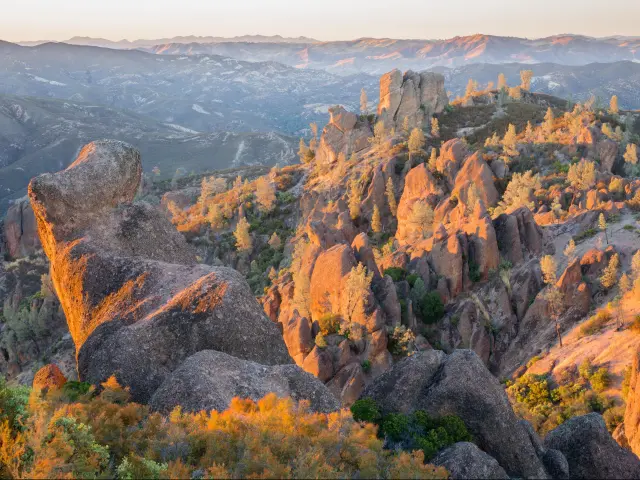
If you're looking for something new and upcoming, the smallest and youngest national park in California, Pinnacles National Park, is about a 10-and-a-half-hour drive from Phoenix.
Located in Salinas Valley in Central California, you'll be able to get to Pinnacles National Park by beginning your journey on I- 10 West, which will lead you from Arizona to California. Then you'll get on CA-210 West and I-210 West heading towards Sacramento.
You'll proceed onto I-5 North through Los Angeles, where you can make a pit stop and then follow state routes to reach the entrance of the park.
Home to the endangered and extremely rare to witness since there are only about three hundred in the world, California Condor, Pinnacles National Park is the perfect place for bird enthusiasts to finally catch a glimpse of the majestic creature.
The park is populated with rugged rock structures that arose as the after-effects of a now dormant volcano on the San Andreas fault that erupted years ago, and the best way to explore the region is through the trails, especially the High Peaks to Bear Gulch loop.
The park is best to visit in the colder months; fall brings in great weather for more strenuous hikes. However, the temperature can rise rapidly in the area, sometimes reaching 85 degrees Fahrenheit even in fall, so keep drinking water.
Though small, the park is an excellent place to explore and go on scenic hikes, devoid of the crowds that the bigger national parks attract. If you are craving more adventure, you can also combine this route with a road trip to San Diego or Los Angeles.
21. Great Sand Dunes National Park, Colorado
10 hours 15 minutes from Phoenix (650 miles)
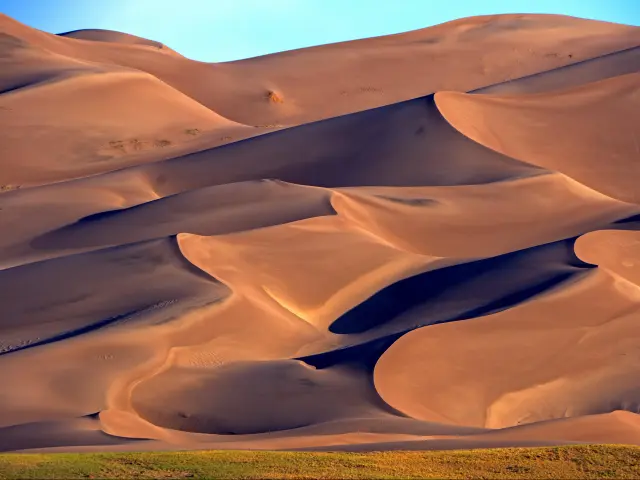
Home to the country's tallest sand dunes (the highest of which, called Star Dune, extends up to 750 feet tall) and other geological wonders, the Great Sand Dunes National Park located in Southern Colorado is perfect for a getaway from the city.
It'll take you just over 10 hours to get there from Phoenix if you follow the route that begins on I-10 East and then promptly merges with AZ-87 North. You'll then follow the state routes and connect with I-40 East, which will take you into New Mexico and through Albuquerque.
After following local New Mexico routes, you'll ultimately continue onto US Highway 285 North which will take you into Colorado, and regional routes will lead you to the park's entrance.
Spreads across 149,028 acres, this expansive sand pit is an oasis of many different terrains, each more beautiful than the next. With such distinctive landforms, the activities to enjoy the park are diverse, meaning there is something exciting to do for everyone.
If you're hoping to push your physical boundaries, you can hike up to the summit of the tallest dune and enjoy a view like no other or go sledding on the sand dunes in the latter half of the summer.
You will be at the foot of the Rockies, so you will have the opportunity to explore the fascinating alpine lakes, vast wetlands, and the pristine alpine tundra if you wish to venture out.
Wildlife watchers will get a chance to spot Owls, Elk, bears, Bighorn Sheep, Pronghorns, and other animals that have had to evolve and adapt to the climate and ecology of the region to survive.
Mid-May and early June are the busiest times for the park as the snow melts and Medano Creek's flooding will be at its peak, which provides water activities such as rafting. This means weekends will be extremely crowded, with long lines of traffic and overflowing parking lots.
Bonus: As an International Dark Sky Park, there's nothing quite as peaceful as camping in the park, observing the great constellations as the dunes tower over you!
22. Yosemite National Park, California
10 hours 35 minutes from Phoenix (650 miles)

One of the most visited national parks in the country and well known across the world as a haven of natural beauty, Yosemite National Park is such a beautiful region that it would indeed be a crime to never traverse through it, so consider this your sign!
It is located in the Sierra Nevada Mountains in California and is more than a 10-hour drive away from Phoenix. The best way to get there is by getting on I-10 West to make it well into California. Then, you'll go on to drive on CA-210 West and I-210 West towards Sacramento.
Ultimately, you'll follow I-5 North and CA-99 North passing through Bakersfield and Fresno. You will then follow CA-41 North to make it to this paradise of impressive Sequoia trees, cascading waterfalls, and fascinating wildlife.
The park is surrounded by the tall and jagged peaks of the Sierra Nevada range along with the idyllic Yosemite Valley and is home to some of the best waterfalls in the country.
Some of the spots in the park that you must visit, especially when you go for the first time are the Yosemite Falls Trail and Tunnel view for spectacular unobstructed views of the valley.
Yosemite National Park has so much to offer that so many people go multiple times to see newer parts of the park or even just enjoy the same places in different seasons because they're genuinely so beautiful.
The park also has plenty of lodging and dining options, the Yosemite Museum, and the Ansel Adams Gallery, which houses photographs of the landscape taken by the namesake artist.
A true delight no matter what time of the year you end up visiting, though the fall months are believed to be the most stunning with the foliage changing color and the temperature a high of 70 and a low of 40 degrees Fahrenheit at lower altitudes.
The park has more than 750 miles of trail to explore, where you can spot some of the black bears that call Yosemite home from a safe distance and make the most of your time surrounded by nature at its best!
READ MORE - Road Trip From Phoenix To Yosemite National Park
23. Big Bend National Park, Texas
12 hours 35 minutes from Phoenix (720 miles)
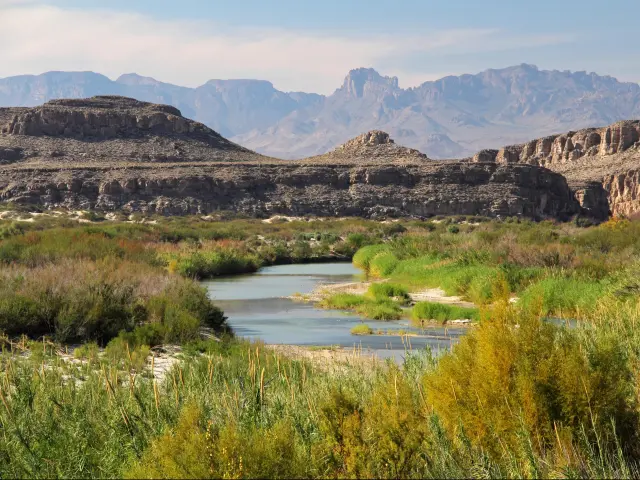
Spread across 801,163 acres in Western Texas, the majestic Big Bend National Park is a hiker's paradise. The drive will take over 12 hours, but you won't notice the miles, driving through the largest and most stunning protected area of the Chihuahuan Desert.
To reach this park, the best route is to follow along I-10 East and drive through New Mexico and enter Texas. You'll then proceed to get on US Route 90 East and then US Route 385 South leading you to the entrance of the park.
Though the drive is long, you'll encounter several other national parks mentioned in the list along the route, such as the White Sands National Park, so perhaps a more extended trip exploring all these places is the best way to go.
The park is home to over 1,200 different plant species, many of which are endemic (only found within the park), along with diverse animal and bird species.
To truly enjoy all the park has to offer, you must go on the Ross Maxwell Scenic Drive to enjoy panoramic views of the Chisos Mountains, observe and learn about the Langford Hot Spring, and follow along any of the many trails spread across this vast park.
The weather in the region can get extremely harsh, especially in the height of summer, exasperated by the fact that it is low humidity, arid, and dry area. The temperatures in this season reach a maximum average of 95 degrees Fahrenheit.
If you can handle the heat, summer is the best to get out on the Rio Grande River and enjoy a scenic floating trip, while the fall months are ideal for longer hikes and sightseeing with milder temperatures of 75 degrees Fahrenheit.
24. Lassen Volcanic National Park, California
14 hours 10 minutes from Phoenix (870 miles)
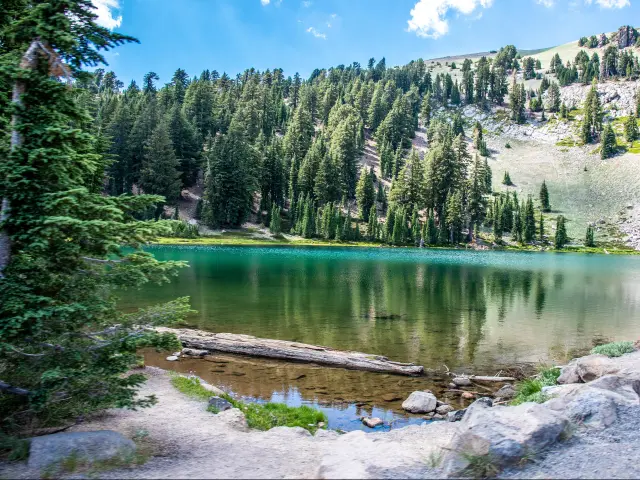
With hydrothermal sites, mud pots, and a now dormant volcano, Lassen Volcanic National Park, located in northern California, is one of the most underrated parks in the country.
Located 870 miles away from Phoenix, it's a relatively longer but worthwhile drive since you'll pass through some of the best scenic landscapes of the West coast and get to explore the geological wonders of the region.
While the distance might seem a lot, the route is relatively simple; you'll get on US Route 93 North to make it to Nevada, and then after crossing Las Vegas, get on US Route 95 until you reach Reno.
After a couple of state routes, you'll merge with Interstate 80 (I-80) West and then US Route 395. You'll follow CA-36 West and CA-44 West to reach the entrance to this lesser-known but all the more beautiful national park.
The park's rich ecological history was determined for the most part by the eruptions of the 300-plus volcanoes in the area. You'll also discover and learn about unique geothermal areas like boiling pools, steaming grounds, hot springs, etc.
You'll also find many breathtaking lakes, especially Juniper Lake and Manzanita Lake, which you can't miss.
The park has top-notch ranger-led programs, especially if you're interested in the geography and science of the park's features, making it a great place to visit with kids.
Keep in mind that all roads in the park are closed to car traffic between December and May, so you can only visit Lassen Volcanic National Park from June to October.
A unique, well-rounded, and lesser-explored park, the Lassen Volcanic National Park is perfect for a road trip destination from Phoenix. You can also combine this route with our road suggested road trip from Phoenix to Seattle for a bigger adventure.
Bonus: An international dark sky park, if you choose to camp in the region (which is easy to do since the crowds are fewer than in most well-known parks), you'll have the stargazing experience of your dreams.
25. Rocky Mountain National Park, Colorado
13 hours 50 minutes from Phoenix (870 miles)
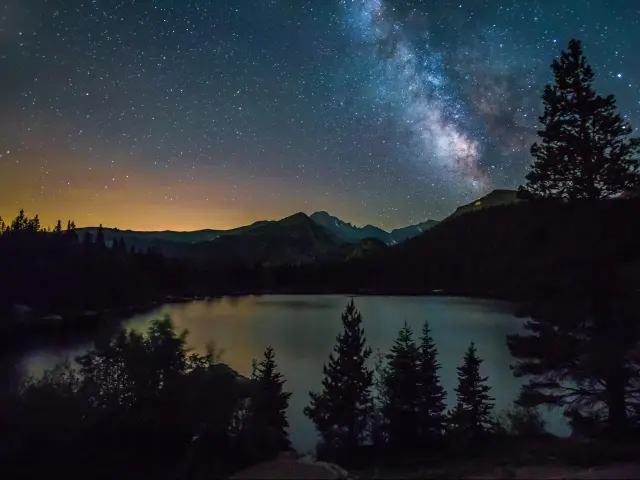
The Rocky Mountain National Park, located in Northern Colorado, spans 265,807 acres and boasts some of the most picturesque sceneries in the region.
Though located over 900 miles away from Phoenix, if you're feeling rather adventurous and have time to take a road trip across the country, there's no better place to visit than this oasis of lakes, mountains, and valleys.
The fastest way to get to Rocky Mountain National Park is by beginning your journey on I-17 North. Then, you'll get on to US Route 160 East to reach Utah, and then US Route 191 North will lead you to Interstate 70 (I-70) East to enter Colorado.
After following state routes, you'll reach the entrance adjacent to Grand Lake, which is Colorado's deepest and largest natural lake, and enter the nature haven that is Rocky Mountain National Park.
The park is believed first to be inhabited by Native Americans, Paleo Indians, and other indigenous tribes that contributed to the good health and sustainability of the natural resources that we get to enjoy in the park today.
The park was traversed by American travelers and European settlers looking for new ventures and ultimately by Enos Mills, who is considered the father of the Rocky Mountain National Park.
One of the most visited national parks, this is a hotspot for picture-perfect alpine lakes, like Bear Lake, which sits at an altitude of 10,000 feet and is possibly one of the most pictured lakes in the world.
You'll also stumble upon Long's Peak, named after Stephen Long, who headed one of the first expeditions of the area, which is the highest peak in the Northern Range of the Rockies in North America at 14,259 feet.
Choose from any of the many trails across the park, discover the hidden gems of nature by going horseback riding, or spend time driving through the Trail Ridge Road; your time spent in the marvelous Rocky Mountain National Park is bound to be a mix of peaceful and exciting.
If you are visiting Rocky Mountain National Park, keep in mind that the national park uses a timed entry permit system. Please check the national park's website to see if you need to make a reservation before your visit.
Best National Monuments, State Parks, National Conservation Areas and Preserves
Besides national parks, there are numerous attractions like national monuments, forests, recreational areas, and state parks worth exploring, just a short road trip from the city.
1. Lost Dutchman State Park, Arizona
50 minutes from Phoenix (40 miles)

Located north of the Apache Junction, less than an hour's drive away from the city on US Route 60, is the beautiful Lost Dutchman State Park. Spread across over 300 acres in Pinal County, you'll enjoy panoramic views of the Superstition Mountains from this park.
The state park owes its name to the adage of a Dutchman discovering a bag of gold in the mountains decades ago. A delight to traverse all year round, you'll find wildlife like mule deer, coyotes, jackrabbits, and more that call the park home.
The park has several hiking, biking, and nature trails, which are a great way to explore the varying landscapes of the park, mainly the mountain bike loop trail for some stunning vistas of the area and beyond.
The park has a vast campground with RV hookups (though reservations are required) where you can stay overnight and also enjoy the starlight sky.
Though you can visit at any time of year (be sure to stay extra hydrated in the summer as temperatures can soar above 100 degrees Fahrenheit), if you visit in the spring, you'll spot beautiful desert wildflowers among the mountains and grassland.
2. Tonto National Forest (and Tonto National Monument), Arizona
1 hour 10 minutes from Phoenix (60 miles)
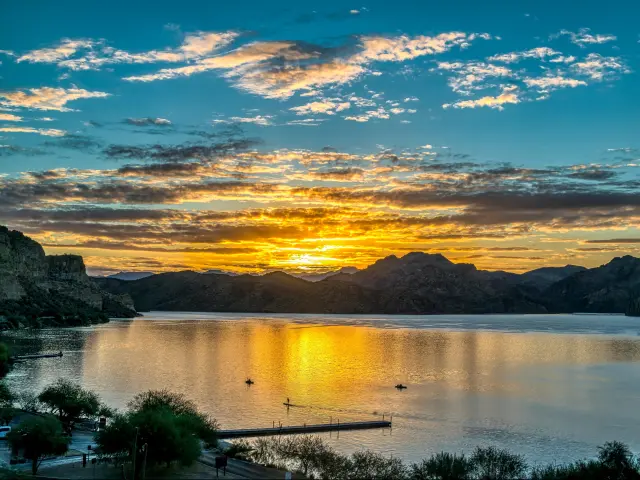
Spread across an enormous area of over 2 million acres, the Tonto National Forest is one of the ten most enormous national forests in the entire country. A diverse landscape, it is located just off of AZ-87 North and will take you just over an hour to reach from Phoenix.
Deep into the forest, just beside the beautiful Theodore Roosevelt Lake, is the Tonto National Monument, which holds the rich history of the people that used to reside in this region decades ago.
The region was declared a national monument in 1907 by President Theodore Roosevelt and houses iconic steep cliffs that make up the rugged iconic landscape of the area.
In the forest, you'll be able to tour water bodies like the Bartlett Reservoir, Apache Lake, Saguaro Lake, and more, and spot species like the Rocky Mountain Elk, New Mexico Black Bears and Ring-Tailed Cats.
It's definitely worth a visit if you're looking to hike and forage through mountainous regions and also learn about the history of the Salado people; how they lived, how they survived, and to honor their contribution to the thriving landscape that the Tonto National Forest is today.
3. Picacho Peak State Park, Arizona
1 hour 10 minutes from Phoenix (75 miles)
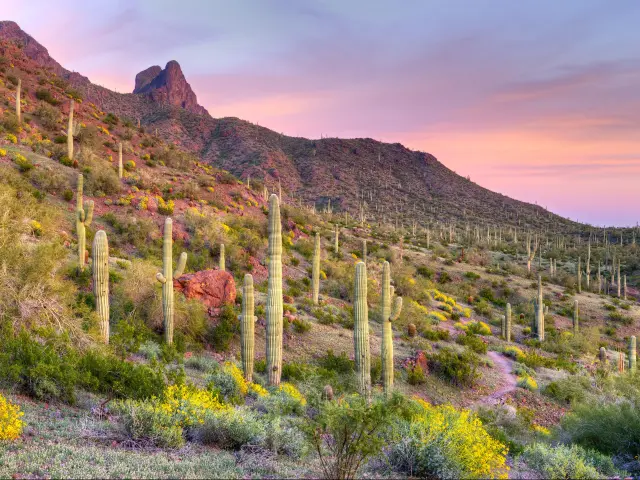
Located just over an hour from the city and unmissable if you're traveling via I-10 East is the Picacho Peak State Park, an ideal place for a day trip away from the bustling city.
Centered around the 1,500-feet tall Picacho Peak in the city of Picacho, this state park is an excellent place for a fall-time picnic, a sunset walk, or even a day trip.
The peak was formed due to eroded volcanic flow and now has an entire park around it with several hikes, each varying in complexity, and campgrounds to stay overnight and enjoy an evening under the stars.
If you're an RV traveler, the campgrounds also have RV hookups, making it the perfect pit stop before you continue onto your next adventure.
In particular, the Sunset Vista Trail is the one you must go on, a moderate 3.1-mile trail that'll take you to the summit of the peak. If you visit in winter, you will take advantage of the warm temperatures at 65 degrees Fahrenheit and endless sunshine on a clear day.
4. Coconino National Forest, Arizona
1 hour 20 minutes from Phoenix (90 miles)
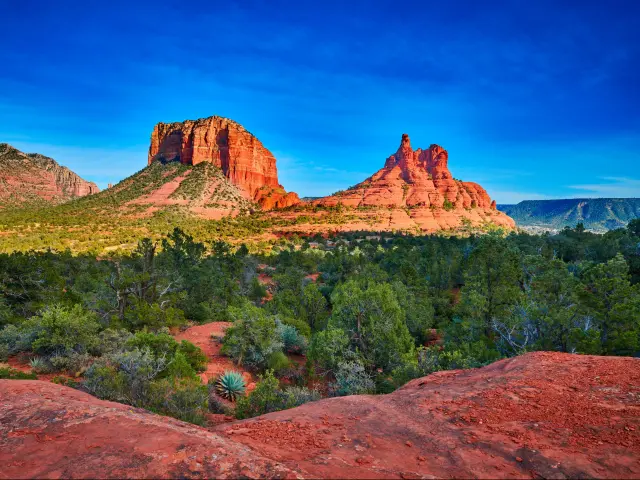
One of the biggest national recreational areas on the list, the Coconino National Forest, located in northern Arizona, extends across 1.85 million stunning acres of peaceful walks, quaint picnic areas and wildlife watching opportunities without going too far.
A one-road journey, you'll get onto I-17 North heading towards Flagstaff (the closest big city to the forest), which will lead you right to the entrance of the woods, famous for the Red Rocks of Sedona and Ponderosa Pine Forests.
In the region, you'll find attractions like the Oak Creek Canyon, believed to be the Grand Canyon's younger cousin, and Cinder Lakes as well as other stunning landmarks such as Sunset Crater National Monument.
The national forest is also home to several historical sites, such as the Elden Pueblo, V Bar V Heritage Site, and Palatki Heritage Site, each with unique petroglyphs and other structures reminiscent of the past inhabitants, their culture, and lifestyle.
A place where you can go camping, swimming, horseback riding, fishing, hiking on some of the area's best trails, and even participate in winter sports if weather permits, the Coconino National Forest is a paradise of natural beauty, just an hour outside the city.
5. Prescott National Forest, Arizona
1 hour 50 minutes from Phoenix (110 miles)
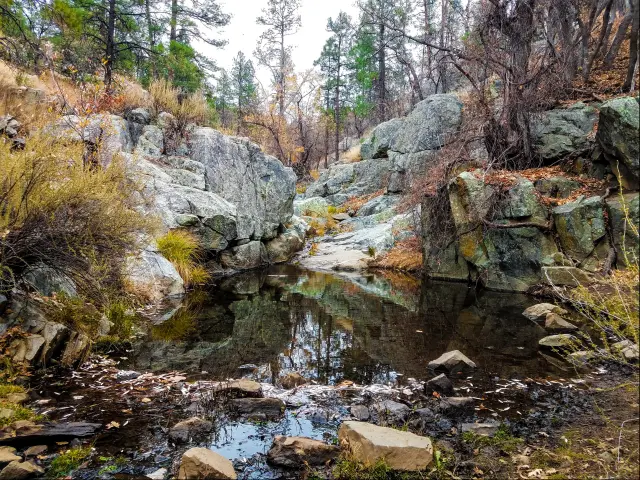
Spread across a colossal area of 1.25 million acres in Prescott is the famous Prescott National Forest, located less than two hours away from your starting point in the city.
To get to Prescott National Forest, you'll begin on I-17 North heading towards Flagstaff and then exit onto AZ-69 North, which will lead you to this beautiful, sprawling land of green which was initially established as the Prescott Forest Reserve was in 1898.
After that, it was redesignated as a National Forest in 1907, and until 1934, newer sections of neighboring forests were added to the area to expand the conservation as much as possible.
In the region, you'll discover destinations like the Verde River, Horsethief Basin Recreation Area, Lynx Lake, Sheridan Mountain and Highlands Center for Natural History.
To best explore Prescott National Forest, which boasts more than 950 miles of scenic trails, you can go hiking, fishing, camping, cycling, swimming, boating, horseback riding, and the list just goes on - any adventure excursion you're looking for, you're likely to find it here.
6. Apache-Sitgreaves National Forest, Arizona
2 hours 10 minutes from Phoenix (120 miles)
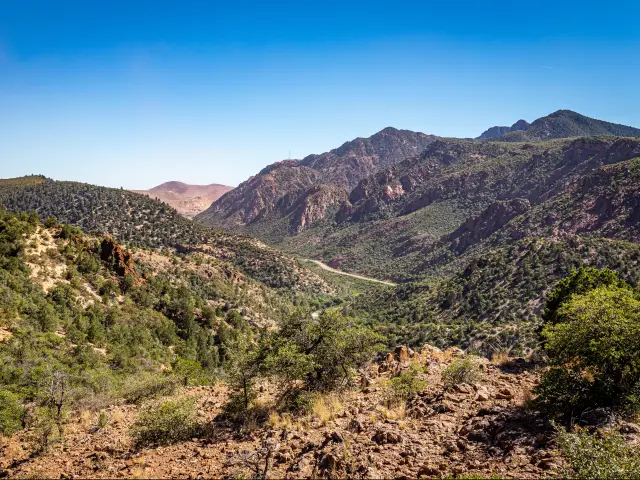
If you're searching for a place for a mindful and spiritual getaway, there's no place better than the landscapes of the Apache-Sitgreaves National Forest, just a mere two-hour drive from the city of Phoenix.
To get to Apache-Sitgreaves National Forest, you'll use AZ-202 Loop East to merge with AZ-87 North for nearly 75 miles. Then, you'll exit onto AZ-260 East, which will lead you to the entrance of the emerald-green national forest.
Though this forest was affected by forest fires over a decade ago, there's so much to see at this national forest that you're bound to have a memorable time.
Some of the attractions you can't miss include the Bear Wallow Wilderness, which is a forest full of fir, pine, and other trees that go on for miles. You might also spot a black bear or a mule deer scrounging around the area.
Blue Range Primitive Area is home to some of the most majestic peaks in the region is another stunning landmark in the area along with the Aker Lake Fishing Site where you can fish for as long as your heart pleases or follow along the scenic hiking loop near the lake.
7. Red Rock State Park, Arizona
2 hours 15 minutes from Phoenix (120 miles)
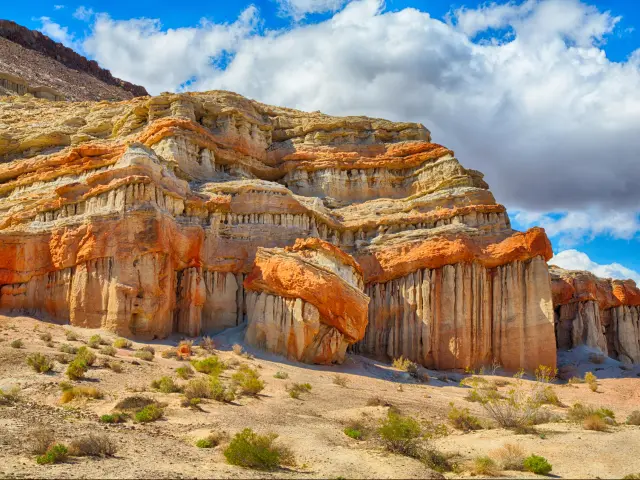
One of the most gorgeous state parks in the region, the Red Rock State Park in Sedona is located in the convergence of the El Paso and Sierra Nevada Range and is home to the famous brightly colored and uniquely shaped red cliffs, making it a breathtaking place.
About 120 miles from Phoenix, to reach Red Rock State Park, you'll start on I-17 West. After following this road for quite a while, you'll exit onto AZ-260 West and then Red Rock Loop Road, which has stellar views of the park.
The park has a rich past as it was initially inhabited by Kawaiisu Indians, whose petroglyphs and other signage can be found in the rock structures in the region.
Besides being a great place to hiker, tour, and explore as a short getaway from the city, the park is known for being a conservation area of several dug-up fossil sites and the artifacts left behind from the mining operations.
Bonus: Be sure to check out the Eagle's Nest Loop Hike for some sprawling views of the valley, grasslands, and beyond.
8. Oracle State Park, Arizona
2 hours 10 minutes from Phoenix (120 miles)
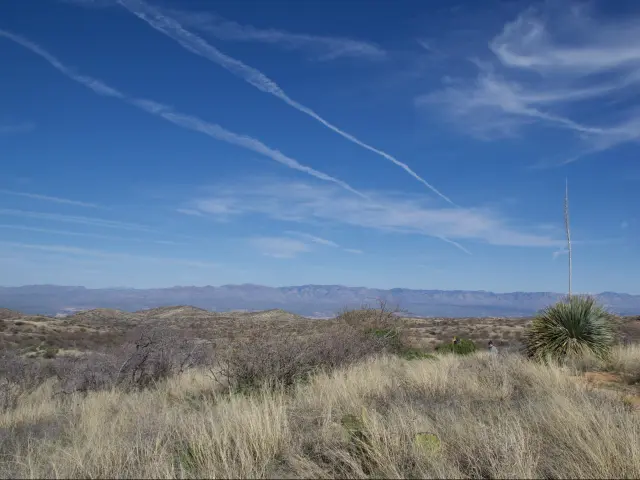
If you're searching for a relatively unknown and underrated state park to tour, hike, and soak in the beauty of, Oracle State Park, located in the Catalina Mountains, is the place for you!
You'll begin your short road trip by getting on I-10 East, and then after about an hour of driving, exit onto AZ-79 South and then AZ-77 North. You'll proceed to turn right onto Wildlife Drive, leading you to the beautiful scenery of the Oracle State Park.
It is spread over 4,00 acres and has up to 15 miles of trails, including a section of the well-known Arizona Trail that you can hike, bike, or even go horseback riding if you are feeling adventurous.
As an International Dark Sky Park, camping underneath the starlight, devoid of heavy tourist crowds, sounds like a peaceful night to recharge and unwind, away from the commotion of the city.
If you want to have the perfect experience, September is the time to visit Oracle State Park with the temperature in the mid to low 80 degrees Fahrenheit.
9. Organ Pipe Cactus National Monument, Arizona
2 hours 20 minutes from Phoenix (130 miles)
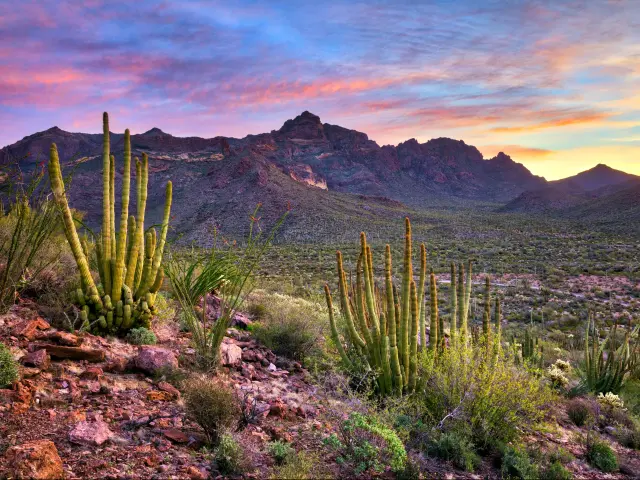
Home to a wide variety of plants and animals indigenous to the Sonoran Desert, of course including the Senita and Organ Pipe cacti (which don't grow anywhere else in the US), is the Organ Pipe Cactus National Monument.
Located over a two-hour drive from the city, in Pima County, it is on the border of the US and Mexico and was declared a UNESCO biosphere reserve for its glorious flora and fauna.
To get there, you'll head down I-10 West and then proceed onto AZ-85 South which will lead you to this national monument.
You'll get to enjoy the beauty of the Sonoran Desert as you camp in the wilderness and take a scenic drive. Here, you can also observe and learn more about the unique cacti species that you won't find growing in the wild anywhere else in the US.
Besides the cacti, there are also plenty of animals (Mule Deer, Kangaroo Rat, Desert Bighorn, Mountain Lion and Sonoran Pronghorn among other species) and up to 270 bird species that have adapted to the unique topography of the desert.
10. Kofa National Wildlife Refuge, Arizona
2 hours 30 minutes from Phoenix (160 miles)

The stunning Kofa National Wildlife Refuge is a peaceful oasis located two and a half hours from Phoenix. This refuge, established in 1939, is spread across a massive area of 665,400 acres in Southwestern Arizona.
Initially created primarily to protect the majestic desert Bighorn Sheep, it has since also become a protected area for other indigenous animals of the region like badgers, tortoises, and kit foxes.
To get to this wildlife haven, you'll start driving on I-10 West and then after over 100 miles of driving, you'll turn onto US Route 95 South leading you to your getaway destination.
Besides finding wildlife or discovering new plants, visitors also enjoy looking for quartz crystals at Crystal Hill or admiring the jagged peaks of Castle Dome and Kofa, which are the park's mountain ranges.
A unique amalgamation of landscapes, the Kofa National Wildlife Refuge is a great place to go hiking. The area's only marked trail, Palm Canyon Trail, which goes on for over 7.1 miles, is possibly the only place the native California Fan Palms grow in Arizona.
If you'd like to catch the perfect sunset followed by the gorgeous night sky, you can also camp in the wildlife refuge. Late May and early June are perfect for this as the temperatures stay around the pleasurable range of 80-85 degrees Fahrenheit.

